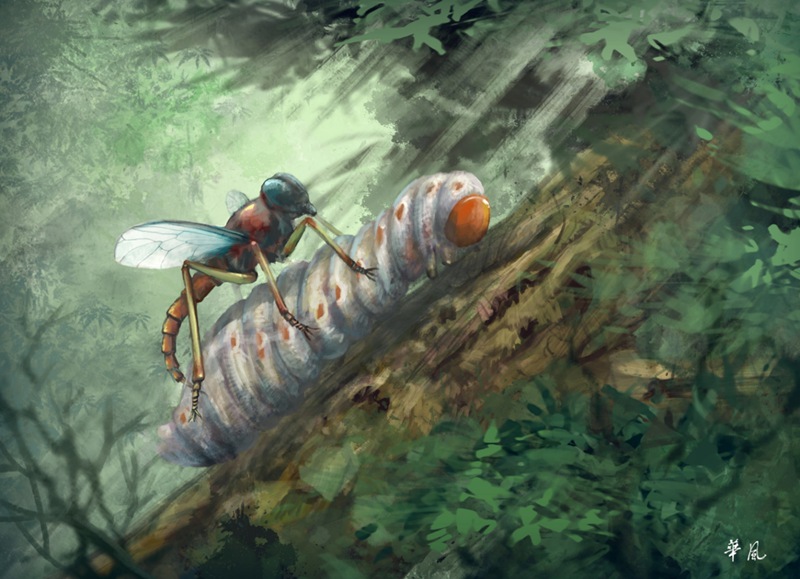
Photograph of Zhenia xiai gen. et. sp. nov. a, holotype; b, paratype; c, paratype
Parasitoidism—the larvae developing by feeding on other arthropods and eventually killing them—represents a major shift in the mode of carnivory within terrestrial ecosystems and strongly regulates modern trophic webs. Parasitoidism is a key innovation in insect evolution, and parasitoid insects, nowadays, play a significant role in structuring ecological communities. There is no direct fossil evidence for insect parasitoidism before the Early Jurassic, Early Jurassic wasps have been widely thought to possess the parasitoid lifestyle which evolved once in Hymenoptera. In addition, several Cretaceous insects (Strepsiptera and Coleoptera) were regarded as parasitoids based on their larval evidence of “parasitism”. Other Mesozoic evidence comes from taxonomic assignments, and definitive parasitoid flies are very scarce for this period.
ZHANG Qingqing, a postgraduate student, Dr. Wang Bo and Prof. Zhang Junfeng from Nanjing Institute of Geology and Palaeontology, Chinese Academy of Sciences reported an endoparasitoid insect based on three well-preserved specimens, Zhenia xiai, from the mid-Cretaceous Burmese amber.
Zhenia xiai is an endoparasitoid insect as evidenced by a highly developed, hypodermic-like ovipositor formed by abdominal tergites VIII + IX that was used for injecting eggs into hosts and enlarged tridactylous claws supposedly for clasping hosts. Zhenia xiai represents the latest occurrence of the family Eremochaetidae. The results reveal that the parasitoid behavior, associated with considerable morphological adaptations, was already well established in eremochaetids, providing robust evidence for the great diversification of parasitoids during the Middle Jurassic to Late Cretaceous.
This research was supported by the National Basic Research Program of China, National Natural Science Foundation of China, and Youth Innovation Promotion Association of CAS.
Related information of this paper: Qingqing Zhang, Junfeng Zhang, Yitao Feng, Haichun Zhang, Bo Wang (2015) An endoparasitoid Cretaceous fly and the evolution of parasitoidism.The Nature of Science, 103:2. doi: 10.1007/s00114-015-1327-y.

a, head of Zhenia xiai; b, tarsi and tridactylous claws of hind leg; c, ovipositor.

Restoration of Zhenia xiai gen. et. sp. nov.
